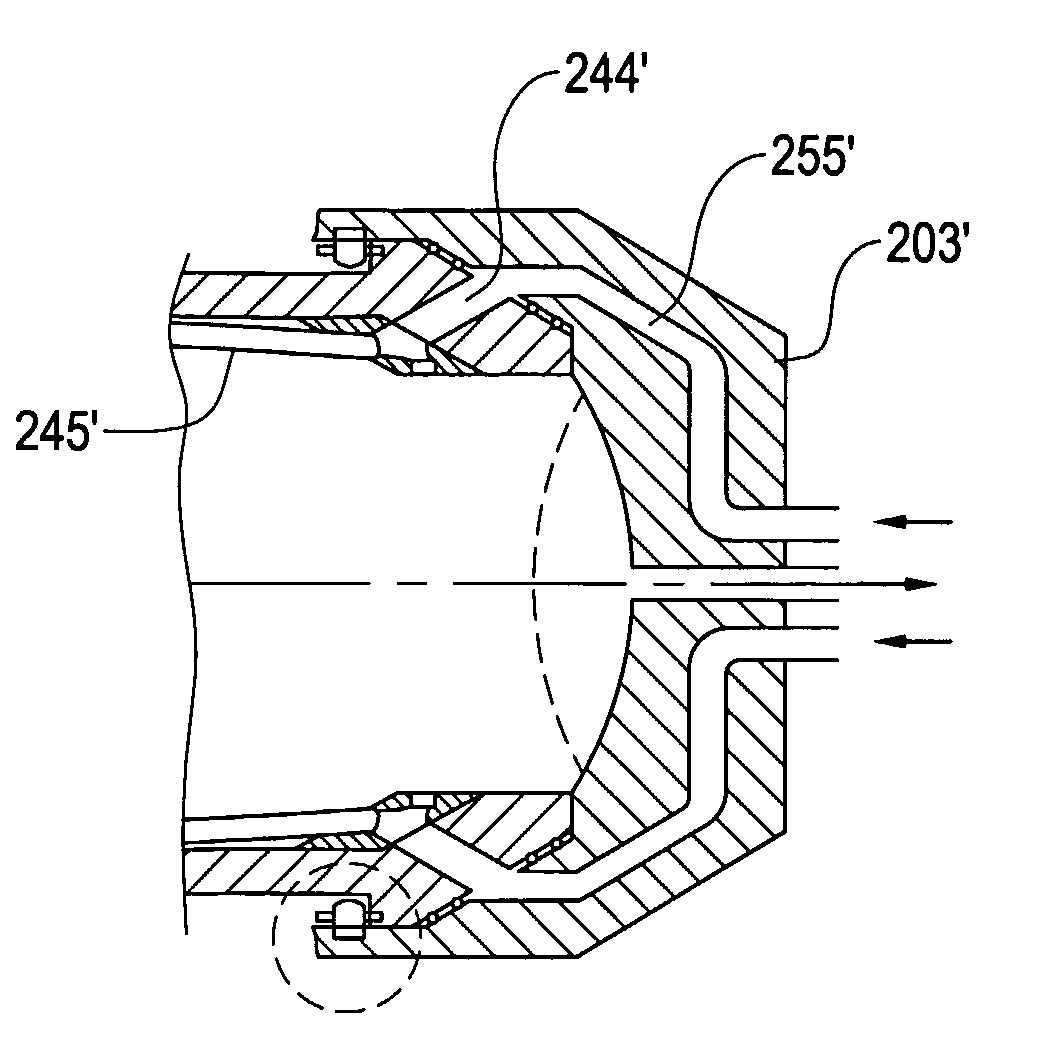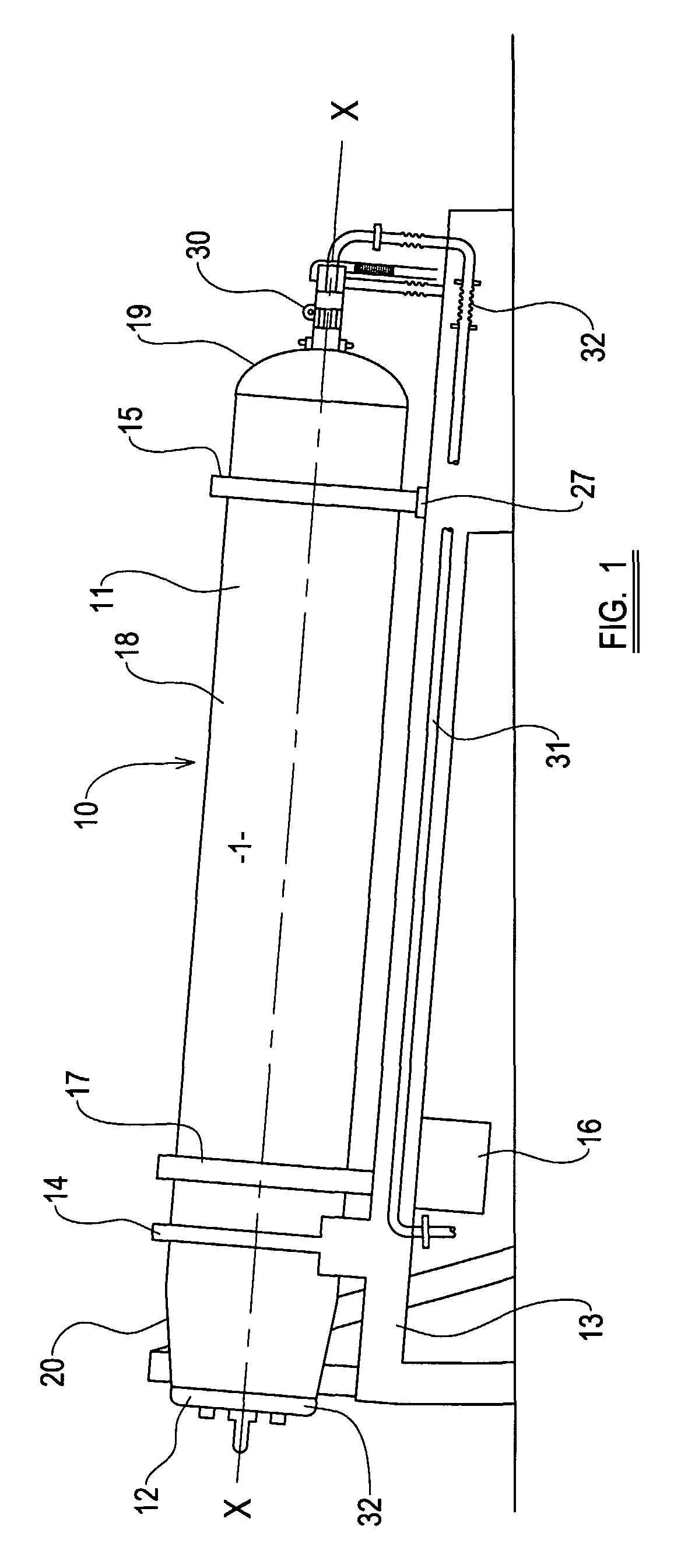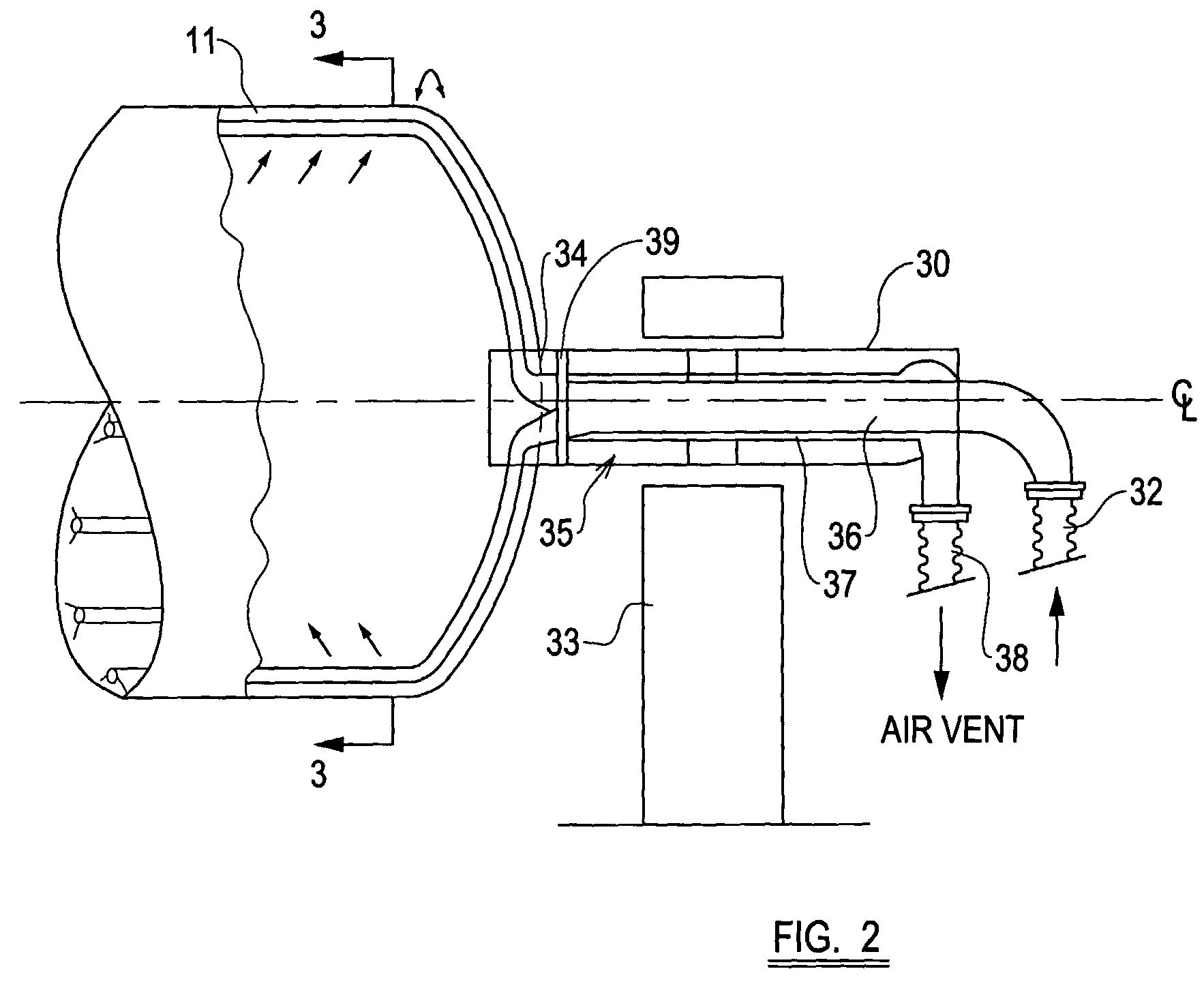Autoclave
a technology for autoclaves and steam supply joints, which is applied in the direction of lavatory sanitory, pressure vessel components, pressure vessel components, etc., can solve the problems of high energy consumption, large equipment, and high risk of cross contamination between treated and untreated waste materials
- Summary
- Abstract
- Description
- Claims
- Application Information
AI Technical Summary
Benefits of technology
Problems solved by technology
Method used
Image
Examples
Embodiment Construction
[0069]Referring now to FIG. 1, an autoclave is generally shown at 10 provided with a pressure vessel 11 closed at one end with a pressure tight door 12. The pressure vessel 11 is supported on an inclined bed plate 13, in this example inclined at an angle of 3° to 8° along its length, and is held in place on the bed plate 13 by appropriate supports 14. The pressure vessel 11 has a longitudinal axis generally illustrated by line X-X, and is rotatable about the axis in the supports 14 by a motor 16 acting on a driving part generally shown at 17. The pressure vessel 11 has a central generally cylindrical part 18 which extends over the majority of the length of the pressure vessel 11, an end part 19 at the opposite end of the pressure vessel 11 to the door 12, and a frusto-conical mouth part 20, the end of which is closed by the door 12.
[0070]To supply steam to the interior of the pressure vessel 11, a steam supply joint is shown generally indicated at 30, and will be discussed in more d...
PUM
| Property | Measurement | Unit |
|---|---|---|
| angle | aaaaa | aaaaa |
| cone angle | aaaaa | aaaaa |
| temperature | aaaaa | aaaaa |
Abstract
Description
Claims
Application Information
 Login to View More
Login to View More - R&D
- Intellectual Property
- Life Sciences
- Materials
- Tech Scout
- Unparalleled Data Quality
- Higher Quality Content
- 60% Fewer Hallucinations
Browse by: Latest US Patents, China's latest patents, Technical Efficacy Thesaurus, Application Domain, Technology Topic, Popular Technical Reports.
© 2025 PatSnap. All rights reserved.Legal|Privacy policy|Modern Slavery Act Transparency Statement|Sitemap|About US| Contact US: help@patsnap.com



